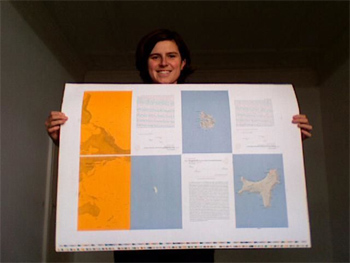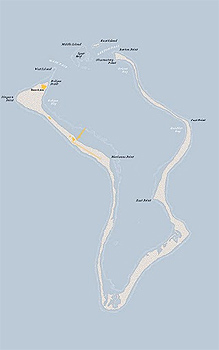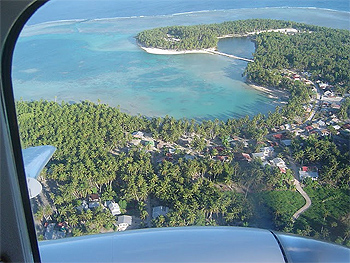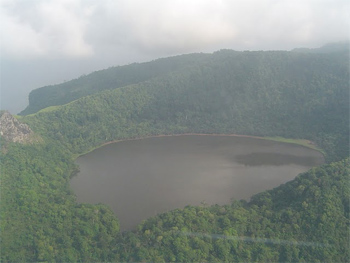
An Atlas of Islands You’ll Probably Never Ever visit: But Veley Has!
By Beth Simmons
Is it possible to confuse a romance novel for an atlas? Judith Schalansky thinks they’re one and the same. She describes her passion beautifully, “For me, Atlases are the most poetic books of all, the body of the earth shown on a map.” And with this interpretation in mind, I seek understanding.
For the most remote islands listed in the book, we asked the World’s Top Traveler Charles Veley to share his thoughts on the places.
I picked up the book and noticed instantly how attractive it is. They say, “Don’t judge a book by its cover,” but I couldn’t help it; and with the initial physical attraction I opened the pages to maps that looked as though they were painted in the Middle Ages. They are clear, artistic, and true to scale. I approached the text and continued my love affair.
Beginning with the unusual subheading to Schalansky’s book which reads, Fifty Islands I Have Never Set Foot On and Never Will, I admit, at first, I was both intrigued and confused. Exploring these emotions, I immersed myself into the introduction and was left wanting more.
I quickly learned that Judith has in fact never been to these places on the book’s cover, yet, she has a fascination for atlases dating back to her childhood. Her romantic writing style causes me to identify my own dreams in hers and like that, I was hooked.

Judith grew up in East Germany and therefore was prohibited from traveling outside its boundaries. Such unfortunate circumstances gave way to an attraction to atlases. In the comfort of her home, she found herself traveling to many far-off lands at the turn of a page, and as she studied their physical shapes, she imagined their histories.
How Did She Choose?
I asked Judith how she chose which islands to include in her book. She replied, “The casting went in two ways. I looked for both the available map material and for the existing stories about the island.”
As she uncovered their unique pasts, Schalansky applied the facts to brief anecdotes about each island. The result is a story that may have happened on the island, given the actual history. Her method is a clever play on both reality and fantasy.
Many of the remote islands within Schalansky’s atlas are uninhabited due to their unsuitable environments for human life. These are often created by volcanoes or are mostly covered in ice. Nature’s course has left me flipping through these images of islands as if they are fine art, surprised by their shapes and sizes.
Up for the Challenge:
Did you know there are 872 countries, territories, and otherwise “places” that make up the Earth? It’s an astonishing number, hard to conceptualize in existence, and even more difficult to imagine traveling to all within a lifetime.
Meet Charles Veley, “Worlds Most Traveled Man.” Charles has traveled to 822 out of the total 872. After finding financial success in software, he chose to dedicate his life to travel in 1999. Now at the age of 45, Charles holds the record title of Most Traveled Man.
Impressed yet? If not, then consider the most remote islands in the world, the areas most people will never see or set foot on, as Schalansky has stated herself. Charles has been to the majority of the 50 mentioned in Schalansky’s book!
Here is a montage of 10 of Schalansky’s chosen islands that Veley has also been to and shares his real-life memories:
Atlantic Ocean:
1. Ascension Island, United Kingdom 91 km2 1,100 residents

Judith writes this island is used for telecommunications and spying with its antennae and cables all over the island. NASA also sets up shop here, monitoring the skies for intercontinental missiles. Veley shares his interpretation of the island, “A Star Wars moonscape, eerily covered with many millions, if not hundreds of millions of dollars of communications equipment, used to listen to cell phone conversations around the world. British-owned, but the main tenant is Wideawake Air Force Base.
The British Officer’s Club is a plain room in a spartan open-air brick building, while the American Rec Center is fully air-conditioned, with a 10-foot-wide ice machine.”
2. Annobón Island, Equatorial Guinea 17 km2 5,008 residents
Annobón is the result of an extinct volcano yet now has lush vegetation, rich woods, and a crater lake called Lago a Pot. Still, it is an economically poor country, as Veley recalls to be, “Poor and isolated, with crumbling Spanish colonial architecture, Annobón sports a gorgeous volcanic crater lake.”
Indian Ocean:

3. Diego Garcia, Chagos Archipelago, United Kingdom, 27 km2 3,700 residents
The U.K. owns this tropical paradise located south of the equator in the Indian Ocean. It’s known for its interesting footprint shape, as you can see in Judith’s map image of the island.
Charles shares his travel experience to Diego Garcia, “Most easily accessed if you are in the U.S. Navy, and can fly in, but the outer islands are a paradise for ‘yachties.’
I landed on the Solomon Islands, but because of my ongoing correspondence with the British Governor of BIOT, was visited by a customs boat who put special Diego Garcia stamps in our passports.”
4. Christmas Island, Australia 135 km2 1,402 residents
“Best known recently for the prison camp erected to detain would-be immigrant boat people (erected by a friend of mine), Christmas Island is most memorable for the millions of pink crabs which swarm underfoot when in season. The constant crunch of shells underfoot and under-car tires can be unnerving.”
Pacific Ocean:
5. Pukapuka, Cook Islands 3 km2 600 residents
“The island of love – closer to Samoa than to Rarotonga. The stories of locals engaging in late-night bed-hopping turn out to be true, as I learned first-hand! The drive to the offloading spot on the beach is flanked by two pink phallic statues.”

6. Banaba, Kiribati 6.5 km2 301 inhabitants
Veley: “Like Nauru, a once-wealthy community based on a phosphate economy, Banaba was annexed by the British to the Gilbert Islands, and remains technically part of Kiribati, although the islanders speak a different language.
Most natives were moved to the Fijian island of Rabi when the phosphate ran out, and the economy collapsed, but several hundred brazenly migrated back, and now squat in the ruins of the Australian worker housing.”
7. Easter Island, Chile 163.6 km2 3,791 inhabitants
Veley’s comments: “The most accessible island on this list, Easter Island moais are best enjoyed with a fresh tuna empanada from Lucy’s diner, where you may be served by a former Miss Chile (as I was). A rental car is highly recommended to get off the beaten track and really enjoy the windswept beauty and isolation.”
8. Clipperton Atoll, France 1.7 km2 uninhabited
Veley says this is one of the worst of the bunch: “A miserable and haunted ring of sand, surrounding a brackish lagoon, with a frightening history of failed settlement. All who attempted to live on Clipperton have either died or gone insane, whether from the equatorial sun, the constant squawking of the nesting boobys, or the thousands of beady-eyed crabs who swarm at night and eat anything organic, such as planted seeds, or human eyeballs.”

“The story of the Mexican soldiers, their wives, the only surviving male and his reign of terror is the all-time real-life horror story. Clipperton Rock stands as a monstrous landmark in this forlorn location.”
9. Raol Island, New Zealand 29.4 km2 10 residents
“Largest of the little-visited Kermadecs, Raoul comprises an active volcano which exploded the year after my visit, killing at least one ranger. We hiked all over the island, including near the volcanic crater, which was noticeably hotter than the rest.”
Antarctic Ocean:
10. Deception Island, South Shetland Island, Antarctica 98.5 km2 uninhabited
“A stunning beautiful Antarctic harbor, with hot springs naturally occurring in the beach! You can freeze and be scalded simultaneously while surrounded by great beauty!
My first visit was from a luxurious cruise ship, while my second was on a working vessel following a five-week expedition to Peter I Island. Deception was the first place our expedition party saw any other humans, and seemed positively bustling.”
Buy this book on Amazon! Atlas of Remote Islands
Visit Charles Veley’s Most Traveled People website

Beth Simmons lives in Boston and teaches elementary school.
- Montreal’s Breweries Await Your Thirst - May 7, 2024
- Mother’s Day Ideas - May 6, 2024
- Exploring Kenya’s Night Markets - May 3, 2024

